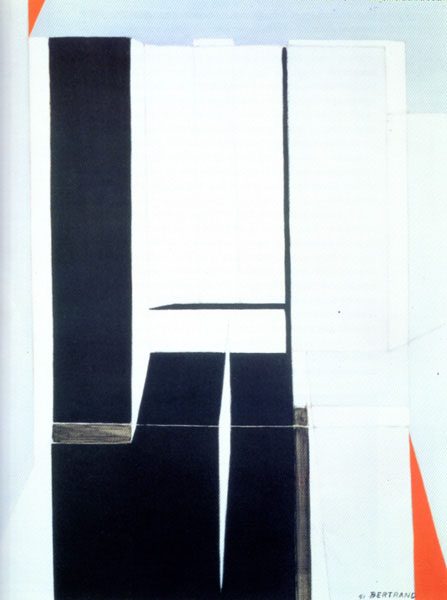Le désir
de l’homme
(Man’s desire)

1951, oil painting on canvas, 81 x 65 cm
Coll. Royal Museums of Fine Arts of Belgium, Brussels
N° inv. 459
Should we consider Gaston Bertrand as an abstract painter? Although the question may look rather scholastic, it is actually legitimate to ask it given the ambiguity that has long been hovering over the artist’s work. Considering the significant number of purely geometric creations, one would answer in an affirmative way. As many painters of his generation, Bertrand first followed the artistic tradition of representing nature and yet demonstrated the large extent of his inspiration and talent. However, after WWII, he started to experiment a new form of expression which was described as “non-figurative”.
How to explain then the presence of human figure all through the artist’s work; a human representation that would instead classify Gaston Bertrand as a figurative painter? It is impossible then to consider Gaston Bertrand as a strictly abstract artist. So, would there be two Gaston Bertrand? We should maybe admit that the artist did not hesitate, according to his own desires, to pass constantly from one bank to the other. Bertrand produced his most abstract works during the 1950s, including Le désir de l’homme, which led the avant-garde critic to consider him as an abstract artist. Although Bertrand did not deny this classification, he was conscious of not completely belonging to the abstract movement. Indeed, Bertrand’s work is articulated at the precise fracture point between abstraction and figuration or, perhaps more accurately, at an equal distance between these two antinomic art forms.